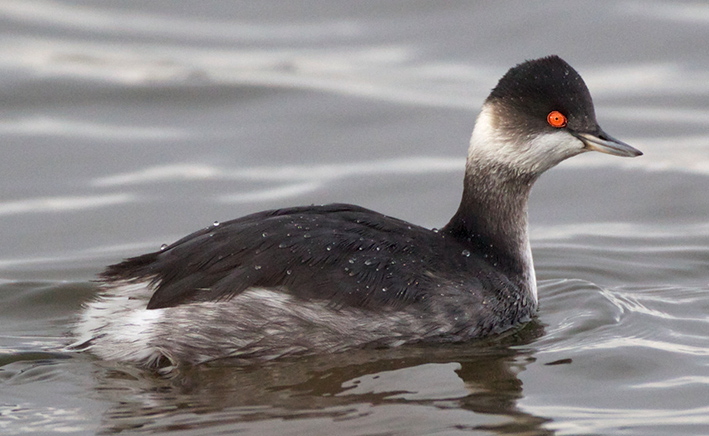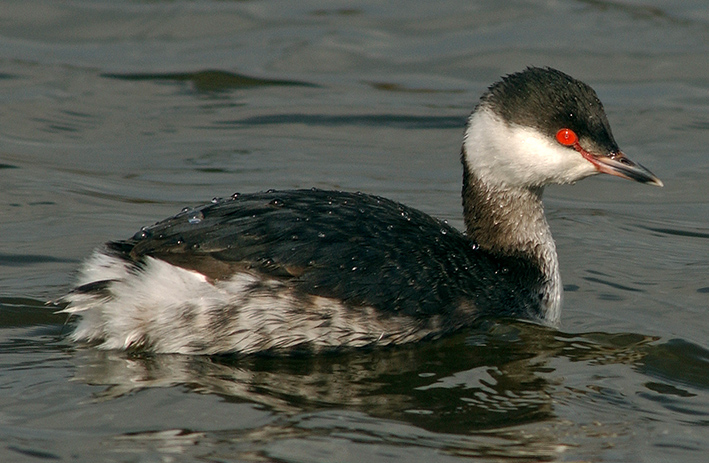WINTER patch-birding can be slow, but two species that can liven up a visit to a lake, reservoir or coastal site are certainly Black-necked and Slavonian Grebes. Both can turn up inland, with ‘Slav’ being a more maritime species and ‘BNG’ preferring bodies of fresh water, but the two often indulge in harsh weather-inspired habitat swaps. When this happens, they can appear similar in winter plumage, particularly at a distance or with poor visibility.
At any distance careful observation of a small grebe’s jizz should give a clue to its identity, once the smaller, more compact and browner Little Grebe has been ruled out, particularly if the red eye of the less common pair is seen.
Black-necked falls between Little and Slavonian in size, and in profile has a notably retroussé beak – short, fine and turned up at the tip. Slav has more of the jizz of a larger grebe despite its diminutive form, being more elongated and sitting lower in the water. It has a more solid dagger-shaped bill, often appearing shorter than it is due to the presence of a pale tip; otherwise the bill is black with pale grey at the base.
Black-necked has a peak in its crown just to the rear of the eye and a more curved hind neck shape, whereas Slav’s crown peak is at the rear of the head and its hind neck is straighter.
Winter individuals of both species are piebald affairs, with black crowns over whitish cheeks, white underparts, black upperparts and dark-streaked ‘fluffy’ flanks. As ever, the ID is in the detail, and Slav is more clear-cut in its monochrome pattern, with a pure white cheek and the lower edge of the crown’s black feathering reaching to just below the eye. It has only a hint of a grey collar on the fore-neck, and the fore to aft streaking on the flanks – beyond which the bird’s rear end can often be seen – is more defined and less smudged-looking. First-winters are very similar to adults, but have a weak, horizontal grey stripe along the cheek and a pale grey lower mandible.
Black-necked has a dark process obscuring most of the pale cheek, protruding well below and to the rear of the eye. The neck collar is dark and obvious, clearly cut off at the throat and top of the chest. Typically the flank streaking is messier than Slav and the fluffy feathering covers the bird’s entire rear end in a similar fashion to Little Grebe. Immature BNGs often retain a buff tone to the cheeks and fore-neck well into winter and this can lead to some confusion with Little Grebe, so particular care must be taken when identifying poorly seen or frequently diving birds.

Black-necked Grebe (Dungeness RSPB, Kent, 28 November 2010). Note the less robust
appearance and the crown peak above the eye like a showjumper’s hat; almost the entire
neck is dark, too. Photo by David Featherbe.

Slavonian Grebe (Seaforth, Lancashire, 25 February 2005). This species is more like one
of the larger grebes in build, and the pale tip to the straight dark bill can sometimes
be seen at a distance. Photo by Steve Young (www.birdsonfilm.com).
Click on the video below for more advice from the British Trust for Ornithology on separating winter grebes.


